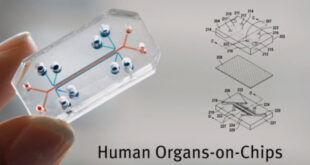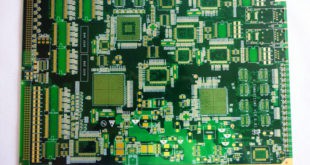In the UK, there are some 7,000 people on the list who are in dire need of organ transplants and In the US, the number awaiting transplant is around 120,000, with 20 dying each day for want of an organ. Current organ transplant patients have to take immunosuppressant drugs all …
Read More »DFM/DFA/DFx optimize product development and Manufacturing
The last few decades have brought several new challenges for manufacturing companies. Technology and improvements in transportation of goods has enabled companies to source parts globally. This has also resulted in more manufacturers having entered the market place. Competition for business is fierce. Manufacturing companies in the developing world …
Read More »Silicon Lifecycle Management (SLM)
Product Lifecycle Management offerings have helped companies manage their product lifecycles for decades, reducing costs, improving quality, and making customers happy. Silicon Lifecycle Management (SLM) is applying such processes in the semiconductor industry for the manufacture of silicon chips. Semiconductor development is currently in one of its periodic crises, …
Read More »Sales and operations planning (S&OP) to Integrated Sales, Inventory, Operations and Planning (SIOP) process
Sales and operations planning (S&OP) is an integrated planning process that aligns demand, supply, and financial planning and is managed as part of a company’s master planning. S&OP is designed and executed to support executive decision-making related to approving a feasible and profitable material and financial plan. The sales …
Read More »PCB Design consideration for aerospace and military applications
Printed circuit boards (PCBs) are the foundational building block of most modern electronic devices on which all of the other electronic components are assembled onto. A circuit card is a thin, flat piece of dielectric material that has conductive paths or traces etched on it. These conductive circuits – usually …
Read More »Lean Six Sigma in Aerospace and Defense Industry ensures the highest level of cost-wise readiness consistency across the unit, quality, and production environments
Digital transformation has become the hottest buzzword of this decade. New technologies and tools are supporting the transformation journey of companies big and small as they compete to get a bigger slice of business in a fast-paced competitive environment. Although digital transformation fast-tracks a company’s growth, it has to be equally …
Read More »Programmable logic controllers (PLC)
Industrial control system (ICS) is a collective term used to describe different types of control systems and associated instrumentation, which include the devices, systems, networks, and controls used to operate and/or automate industrial processes. ICS are typically used in industries such as electric, water and wastewater, oil and natural gas, transportation, …
Read More »Consumer electronics technologies, trends and market
Technology has changed the world that we live in. Businesses have taken advantage of advances in technology in a multitude of ways, usually as a way to increase productivity or decrease operating costs. Consumer technology has made its way to the forefront of technical applications due to it’s incredible potential …
Read More »Augmented Reality Systems for soldiers are set to Revolutionize Battlefield Operations by drastically improving the situational awareness & decision-making
Military to succeed in their missions, require a robust, multi-faceted picture of their operational environments, including the location, nature and activity of both threats and allied forces around them. Warfare is becoming increasingly networked, so finding an effective way to quickly display the deluge of information available, in an easily …
Read More »CBRN Defense Industry and market
The threats of chemical, biological, radiological, nuclear and explosive (CBRNE) hazards continue to advance. According to the University of Maryland’s Global Terrorism Database, there were a total of 143 attacks – 35 biological, 95 chemical, and 13 radiological – using CBRN weapons across the world from 1970 to 2014. The …
Read More » International Defense Security & Technology Your trusted Source for News, Research and Analysis
International Defense Security & Technology Your trusted Source for News, Research and Analysis




